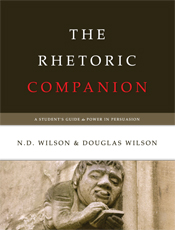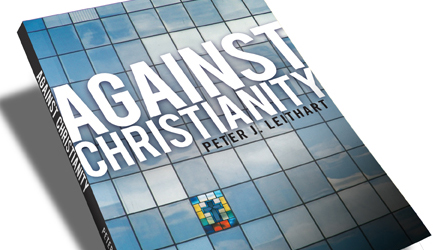Jul
21
2011
or The Systemic Power of Leadership

Everything you know about leadership is wrong.
The five-fold Covenant pattern is found throughout the Bible. Those who claim that Deuteronomy’s shape was borrowed from other Ancient Near East cultures need to explain how it could then be found not only in the Ten Commandments, but in the shape of every story going back to Genesis 1. Their theorizing is the result of their deluded, naturalistic worldview, and Christian scholars suck it right up.
Continue reading
Comments Off | tags: Covenant Theology, Edwin Friedman, Leadership | posted in Bible Matrix, Biblical Theology, Christian Life, Quotes
Jul
19
2011

Biblical chronology isn’t always easy, but it provides the answers to many questions we have concerning Bible prophecy. James Jordan shows how crucial the book of Esther is for our understanding of Bible history:
The book of Esther is one of the most neglected of the books of the Bible. To be sure, sermons are preached on it, and commentaries have occasionally been written on it, but almost without exception Esther has been interpreted in isolation from the rest of Biblical history, chronology, and theology. Even many conservative commentators tend to view the events in Esther as minor occurrences that have been inflated in the narrative in order to make the point of the book. This is because they make the wrong assumptions about the dates of these events, and because they do not understand the importance of the events in Esther to the progress of revelation and redemption.
Continue reading
Comments Off | tags: Bible Chronology, Daniel, Esther, James Jordan, Jeremiah, Nebuchadnezzar, Zechariah | posted in Biblical Theology, Quotes, The Restoration Era
Jul
17
2011

.
From The Power in Persuasion: An Interview with N.D. Wilson and Doug Wilson
How has our postmodern society affected the way we think about rhetoric and persuasion?
Postmodernism is really nothing new. It is just ancient sophistry in a rented tux. Lots of mouth and no muscle. But what we say in the book most directly collides with both modernism and its wee post when we discuss the nature of proof. Skip papa modernism’s crusade for humanistic omniscience and you skip postmodernism’s adolescent daddy issues.
Continue reading
Comments Off | tags: Doug Wilson, Evangelism, postmodernism | posted in Apologetics, Quotes
Jul
16
2011

God loves fractals. He (Father) speaks (Spirit) the Word (Son) and everything He creates is made in the image of the Triune, three distinct, yet indivisible, named parts working as one.
Continue reading
2 comments | tags: Edwin Friedman, Fractals, Most Holy Place, Noah, Tabernacle | posted in Biblical Theology, Creation, Quotes
Jul
13
2011

In Against Christianity (pp. 56-58), Peter Leithart writes:
One of the contributions of twentieth-century Catholic nouvelle theologie, and of Henri de Lubac and Hean Danielou in particular, was a rehabilitation of patristic and medieval typological exegesis of the Bible. Typological interpretation assumes that events and institutions of the Old Testament present, to use Augustine’s terminology, “latent” pictures of Christ. Typological interpretation, in short, sees the whole Bible as gospel, with the gospel narrowly conceived (the story of Jesus) as the culmination of a larger story.
Continue reading
9 comments | tags: Ecclesiology, Peter Leithart, Secular humanism, Typology | posted in Biblical Theology, Quotes
Jul
7
2011
or The Bible is Smarter than We Are
Robert Alter, on reading the Hebrew Bible, again:
To understand a narrative art so bare of embellishment and explicit commentary, one must be constantly aware of two features: the repeated use of narrative analogy, through which one part of the text provides oblique commentary on another; and the richly expressive function of syntax, which often bears the kind of weight of meaning that, say, imagery does in a novel by Virginia Woolf or analysis in a novel by George Eliot.
Continue reading
Comments Off | tags: Higher Criticism, Literary Structure, Robert Alter | posted in Quotes
Jul
4
2011
 .
.
Edwin H. Friedman writes:
“Living with crisis is a major part of leaders’ lives. The crises come in two major varieties: (1) those that are not of their own making but are imposed on them from outside or within the system; and (2) those that are actually triggered by the leaders through doing precisely what they should be doing.”
(A Failure of Nerve: Leadership in the Age of the Quick Fix, p. 27)
Comments Off | tags: Edwin Friedman, Leadership | posted in Christian Life, Quotes
Jun
30
2011

The Bible Matrix is founded in the structures laid down in Genesis 1, but in no way is the Bible repetitious. James Jordan observes that the Bible is “front-loaded” with an incredible amount of information that we deem mostly obsolete, and yet we don’t understand the Bible because we haven’t taken the time necessary to become familiar with this material. What occurs later always acknowledges what has gone before, not just in content but in form as well, in literary and historical structure.
Continue reading
Comments Off | tags: Jericho, Literary Structure, Robert Alter | posted in Bible Matrix, Quotes
Jun
27
2011

How can we fix modern worship? Nearly all debate on this subject overlooks what the Bible has to say.
In From Silence to Song, Peter Leithart justifies the practice of finding patterns for our worship in the Levitical rites in the fact that King David did precisely this.
“…sacrificial worship did not cease with the coming of the New Covenant, but was transformed into a “spiritual sacrifice” and “sacrifice of praise.” We now do different things than ancient Israelites did, but those actions have the same meaning as the actions in the Levitical ceremonies.
Continue reading
2 comments | tags: Chronicles, Communion, David, Leviticus, Liturgy, Peter Leithart, Typology, Worship | posted in Biblical Theology, Quotes
Jun
27
2011
From Wine, Women and Song, James B. Jordan lectures, Biblical Horizons Conference 2010:
“[Wine, women and song] are three things which are essential characteristics of the New Covenant glory which the Church has done a bad job of affirming over the centuries, and are three things which are hated by Islam. Islam is the scourge of Christendom, and a mirror of Christendom. It’s as if all the mistakes the Church makes are magnified in Islam or in some way directly perverted in Islam. Then, there is a fourth characteristic of the New Creation order: holy war.
Continue reading
Comments Off | tags: Holy war, James B. Jordan, Liturgy, Revelation, Worship | posted in Biblical Theology, Quotes

































